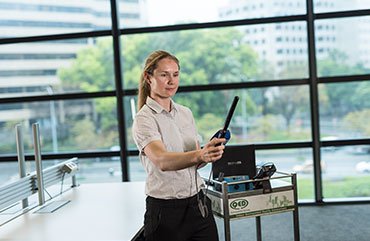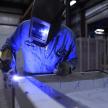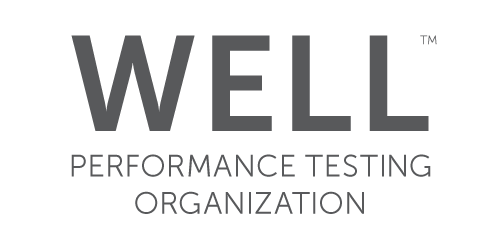
14th
How Often Should Asbestos be Checked for in a Commercial Building?
by Paul Clarkson, Principal Consultant
Once widely used in construction due to its fire-resistant and insulating properties, asbestos is now well-known for posing severe health risks when its respirable fibres are inhaled. Therefore, it is crucial for commercial building owners and managers to understand the importance of regular asbestos inspections.
In this blog post, we will explore the recommended frequency for asbestos checks in commercial buildings to ensure the safety of occupants, trades people working within the buildings, and ensure compliance with state specific legislation.
Understanding Asbestos
Before delving into the inspection frequency, let's briefly understand what asbestos is and why it poses a risk. Respirable asbestos fibres, when released into the air, can be inhaled, and accumulate within the lungs over time, causing pulmonary toxicity. Prolonged exposure to asbestos fibres has been linked to serious health conditions such as lung cancer, mesothelioma, and asbestosis. These diseases often have a long latency period, so understanding and mitigating exposure is critical.
Regulatory Requirements
In many countries, including Australia, specific regulations govern the management and handling of asbestos, especially within commercial buildings. Compliance typically includes compiling and maintaining an accurate Asbestos Register with detailed risk assessment, and a suitable Asbestos Management Plan. A building built prior to the 31 December 2003 is required under tall state based legislation to be assessed for asbestos containing materials (ACM).
Under WHS and the Victorian OHS legislation, there is more onus on the Person Conducting a Business or Undertaking (PCBU) to ensure compliance; training in the use and application of the Asbestos Register and Management Plan is also required for those persons who may encounter or undertake ‘asbestos related work’.
Recommended Inspection Frequency
Although the minimum benchmark of a 5 year review has been established in all state specific legislation, the frequency of asbestos inspections can vary depending on various factors, including the risk ACM poses to occupants and workers, upcoming works, refits or planned maintenance. While there is no one-size-fits-all answer, here are some general guidelines to consider:
- Initial Inspection: If you suspect the presence of asbestos in your commercial building or have never conducted an asbestos inspection, it is essential to initiate an initial inspection.. This comprehensive assessment aims to identify and locate ACM. It involves inspecting accessible areas, sampling suspected ACM, and analysing them in NATA accredited laboratories. The findings will form the basis for further actions and ongoing management. The quality of the inspection is dependent on the experience of the person conducting the inspection, the training they have received and the procedures they follow.
- Periodic Inspections: Once the initial inspection is complete and the presence of ACM is confirmed, periodic inspections should be conducted at regular intervals. The frequency of these inspections depends on factors such as the condition of known ACM, their accessibility, and any changes made to the building or its intended use. Generally, periodic inspections are recommended every 3 to 5 years. However, if the building is older, the ACM are easily accessible, in a fair or poor condition, or experiences significant renovations, more frequent inspections may be necessary.
- Change in Building Use or Renovations: If there are any changes planned for the commercial building, such as a change in use or extensive renovations, it is crucial to conduct a specific asbestos inspection beforehand as the general asbestos register may not be fit for purpose under the regulation. In such situations, an Asbestos Demolition Assessment may be required to ensure any concealed ACM are identified ahead of time. This enables ACM to be removed before demolition takes place, mitigating asbestos health risk to workers, minimising asbestos contamination of waste streams and preventing cost variations and time extensions .
- Ongoing Management and Risk Assessment: Regular visual inspections should be integrated into the ongoing management of commercial buildings. Trained and experienced personnel should inspect areas prone to damage or deterioration, or accessed on a routine basis by workers or maintenance personnel. Any suspected damage or deterioration should be reported and addressed promptly.
- Annual Reviews: With the onus being placed on the PCBU responsible for controlling the building or workplace, QED understands that a lot can happen in 3-5 year time interval and has developed a procedure and touch point to assist it’s partners in conducting annual reviews, or ‘health checks’ to help minimise ACM risk and maintain up to date Asbestos Registers and Asbestos Management Plans.
Maintaining a safe environment for occupants in commercial buildings necessitates proactive asbestos management. Adhering to local regulations, conducting initial and periodic inspections, and implementing proper risk assessment and management plans are essential steps. By staying vigilant and addressing any asbestos-related concerns promptly, building owners and managers can ensure the well-being of everyone within their premises.
Remember, the information provided here is general guidance. It is always advisable to consult with asbestos professionals and local authorities to determine the specific requirements for your commercial building.
Categories
Recent Posts
Changes to the workplace exposure standard for welding fumes
15th Mar
On January 18, 2024, SafeWork Australia made a significant adjustment to the Workplace Exposure Standard (WES) for Welding Fume (not otherwi...
Pseudomonas aeruginosa and the Water Quality Management Plan - it's not just about Legionella.
23rd Feb
Pseudomonas aeruginosa could be responsible for a high burden of disease, and should always be included in a risk management plan....
Navigating the New Norm: Prioritising Indoor Air Quality for Events and Venues
06th Feb
Throughout 2023 there was a surge in venue managers looking to help clients feel at ease in regards to indoor air quality....

















